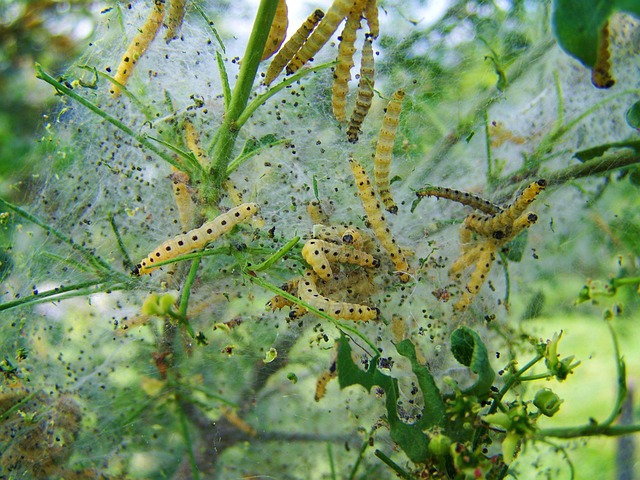This text emphasizes the importance of residential pest control through proactive measures, regular cleaning, sanitation, and professional inspections. Pests enter homes through cracks, openings, and fixtures, quickly spreading once inside. Effective control involves sealing entry points, minimizing food sources and hiding places through cleaning routines, and implementing year-round strategies like trapping and professional treatments guided by Integrated Pest Management (IPM) principles to maintain a pest-free environment, enhance comfort, and preserve property value. Regular inspections by professionals are crucial for early detection and targeted, environmentally friendly solutions.
In the pursuit of a pest-free home, understanding the enemy is the first step. “Expert Strategies for Long-Term Pest Prevention” guides homeowners through a comprehensive approach to residential pest control. From identifying common entry points and implementing year-round cleaning practices, to utilizing effective extermination methods and regular professional inspections, this article equips you with the knowledge needed to safeguard your sanctuary. Discover proven tactics tailored to prevent and manage pests all year round.
Understanding Common Residential Pest Entry Points
Pests can enter homes through a variety of points, often taking advantage of small cracks, gaps, or openings in the building’s exterior. Understanding these entry points is crucial for effective residential pest control. Common areas include windows and doors, especially if they’re not sealed properly or have damaged screens. Outdoor fixtures like garden hoses, outdoor furniture, or even fallen tree branches can provide pathways for pests. Once inside, they can quickly spread to other parts of the house, making early detection and prevention vital.
Regular inspections are key to identifying these points and taking proactive measures. Homeowners should look for signs of pest activity, such as droppings, chewed materials, or unusual noises, and address any issues immediately. Sealing entry points with appropriate materials, like caulk or steel wool, can significantly reduce the risk of pest infestation.
Year-Round Cleaning and Sanitation Practices for Pest Prevention
Implementing robust cleaning and sanitation practices is a year-round strategy for effective residential pest control. Pests are often attracted to food sources, standing water, and hiding places—all of which can be minimized through regular cleaning routines. Keeping your home spotless, especially in kitchens and bathrooms, reduces the appeal of these areas to common pests like ants, roaches, and mosquitoes. Sanitation involves more than just cleaning; it includes proper waste disposal, maintaining a clutter-free environment, and promptly addressing any spills or leaks.
By adopting consistent cleaning habits, you create an inhospitable environment for pests, reducing the need for frequent pest control treatments. Regular mopping, vacuuming, and deep cleaning sessions eliminate potential food sources and disrupt pest life cycles. Additionally, ensuring good ventilation and maintaining low humidity levels can further deter pests, making your home less attractive to a wide range of insects and rodents. These simple yet powerful practices form a solid foundation for long-term residential pest control.
Implementing Effective Extermination Methods and Traps
Implementing effective extermination methods is a cornerstone of successful long-term residential pest control. It involves a multi-faceted approach, combining professional treatments with strategic placement of traps. Integrated Pest Management (IPM) principles guide this process, emphasizing environmentally friendly solutions and targeted interventions rather than heavy reliance on chemical pesticides.
For homeowners, regular inspections are key to early detection. Traps, both sticky and live, can be strategically placed in areas most susceptible to pest invasion. These tools, coupled with professional treatments tailored to specific pests, disrupt the pest lifecycle and prevent future infestations. By adopting these methods, residents can achieve and maintain a pest-free home environment, enhancing comfort and property value through consistent, effective residential pest control.
Regular Professional Inspections: Your Ultimate Defense Against Pests
Regular professional inspections are an essential part of any comprehensive residential pest control strategy. These detailed assessments, conducted by trained experts, offer a deep dive into your home’s potential vulnerabilities, allowing for early detection of any pest infestations. By scheduling routine visits, you create a robust defense mechanism that goes beyond proactive measures.
During these inspections, professionals employ advanced techniques and tools to identify even the subtlest signs of pests. They inspect hidden areas, such as walls, attics, and crawl spaces, where many pests tend to hide. This thorough process enables them to implement targeted treatments, ensuring that any existing infestations are eliminated efficiently, and future invasions are thwarted.
Implementing a comprehensive long-term strategy for residential pest control involves understanding entry points, maintaining sanitation, utilizing traps and extermination methods, and conducting regular professional inspections. By adopting these expert strategies, homeowners can effectively prevent and manage pest infestations, ensuring a safe and healthy living environment throughout the year. This multi-pronged approach to residential pest control is key to keeping pests at bay and maintaining the comfort and integrity of your home.
